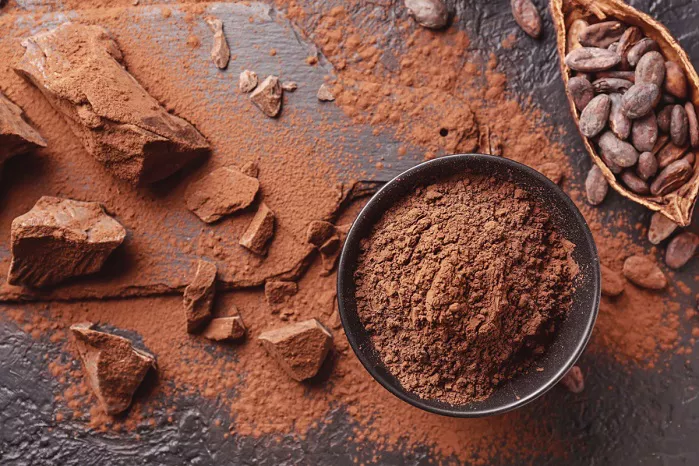In the world of chocolate, the percentage of cocoa listed on the packaging serves as a fundamental indicator of the chocolate’s composition. It not only determines the intensity of flavor but also plays a significant role in nutritional value. Choosing the right percentage of cocoa is a nuanced decision that hinges on personal preference, culinary applications, and health considerations. In this article, we’ll explore the factors that influence the choice of cocoa percentage, helping you navigate the diverse landscape of chocolate and make informed decisions based on your taste buds and dietary needs.
Understanding Cocoa Percentage:
The percentage of cocoa in chocolate refers to the combined amount of cocoa solids and cocoa butter present in the product. This figure excludes other ingredients such as sugar, milk solids (in the case of milk chocolate), and any additional flavorings. Essentially, it represents the intensity of the chocolate flavor and the overall richness of the product. As the cocoa percentage increases, so does the concentration of cocoa solids, leading to a more robust and complex chocolate experience.
The Interplay of Cocoa Solids and Cocoa Butter
Cocoa solids and cocoa butter are the two primary components of cocoa, each contributing distinct characteristics to the chocolate. Cocoa solids provide the deep, chocolatey flavor, while cocoa butter contributes to the smoothness and mouthfeel. The balance between these two elements is crucial in determining the overall profile of the chocolate. Higher cocoa percentages generally mean more cocoa solids, intensifying the chocolate flavor, but they also often result in a drier texture due to lower cocoa butter content.
Milk Chocolate vs. Dark Chocolate:
The choice between milk chocolate and dark chocolate is often the starting point when considering cocoa percentage. Milk chocolate typically contains lower cocoa percentages, ranging from around 30% to 50%, with the addition of milk solids providing a creamier and sweeter profile. On the other hand, dark chocolate spans a broad spectrum, starting from around 50% cocoa and reaching well beyond 90%. Dark chocolate enthusiasts appreciate the depth of flavor and the potential health benefits associated with higher cocoa content.
Flavor Intensity: The Higher, the Bolder?
One of the most noticeable effects of increasing cocoa percentage is the intensification of flavor. Higher cocoa content translates to a more pronounced chocolate taste, often accompanied by notes of fruit, nuts, or spices. Dark chocolates with 70% cocoa and above are renowned for their bold and complex flavor profiles. However, this boldness may not be universally appealing, and individual taste preferences play a significant role in determining the ideal cocoa percentage for a satisfying chocolate experience.
Texture Matters: Balancing Cocoa Solids and Cocoa Butter
While flavor is a primary consideration, texture is equally important in the realm of chocolate. Cocoa butter, a natural fat derived from cocoa beans, contributes to the smooth and creamy texture of chocolate. As cocoa percentage increases, the cocoa butter content may decrease, resulting in a drier and more intense chocolate experience. Balancing the desire for a rich flavor with a smooth mouthfeel is a delicate dance that chocolate makers navigate when determining the ideal cocoa percentage for their creations.
Health Benefits: The Dark Chocolate Advantage
Beyond flavor and texture, the cocoa percentage in chocolate has implications for health. Dark chocolate, with its higher cocoa content, is often associated with various health benefits. Cocoa contains antioxidants, flavonoids, and other compounds that may contribute to heart health, improve cognitive function, and have anti-inflammatory properties. However, it’s essential to consume chocolate in moderation, considering the added sugar and potential calorie content, even in dark chocolate.
Sweet Spot: Finding Your Ideal Cocoa Percentage
The quest for the perfect cocoa percentage is a highly individualized journey. Taste preferences vary widely, and what may be delightful to one person might be too bitter or too sweet for another. It’s advisable to start exploring the spectrum of cocoa percentages, trying chocolates with different levels to discern your personal preference. Consider factors such as the sweetness, bitterness, and overall flavor complexity to pinpoint your sweet spot on the cocoa percentage scale.
Conclusion
In the diverse world of chocolate, the percentage of cocoa serves as a guiding metric that influences both the taste and texture of the final product. Whether you lean towards the creamy sweetness of milk chocolate or the bold intensity of dark chocolate, finding the ideal cocoa percentage is a personal exploration. Consider your taste preferences, health considerations, and culinary applications to navigate the spectrum of chocolate offerings. By understanding the interplay between cocoa solids and cocoa butter, you can embark on a delightful journey, savoring the nuanced pleasures that different cocoa percentages bring to the world of chocolate.























